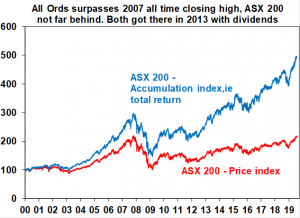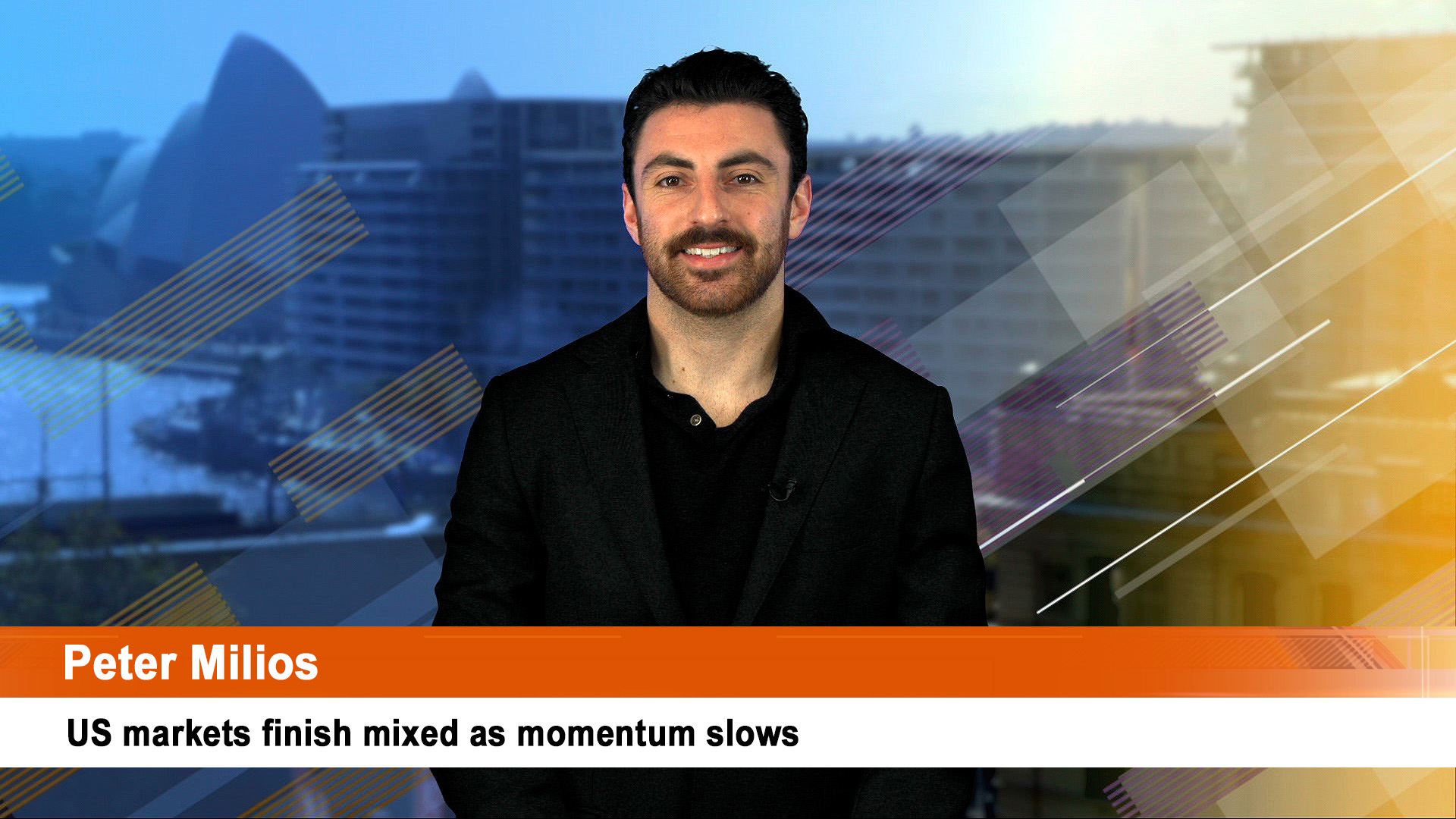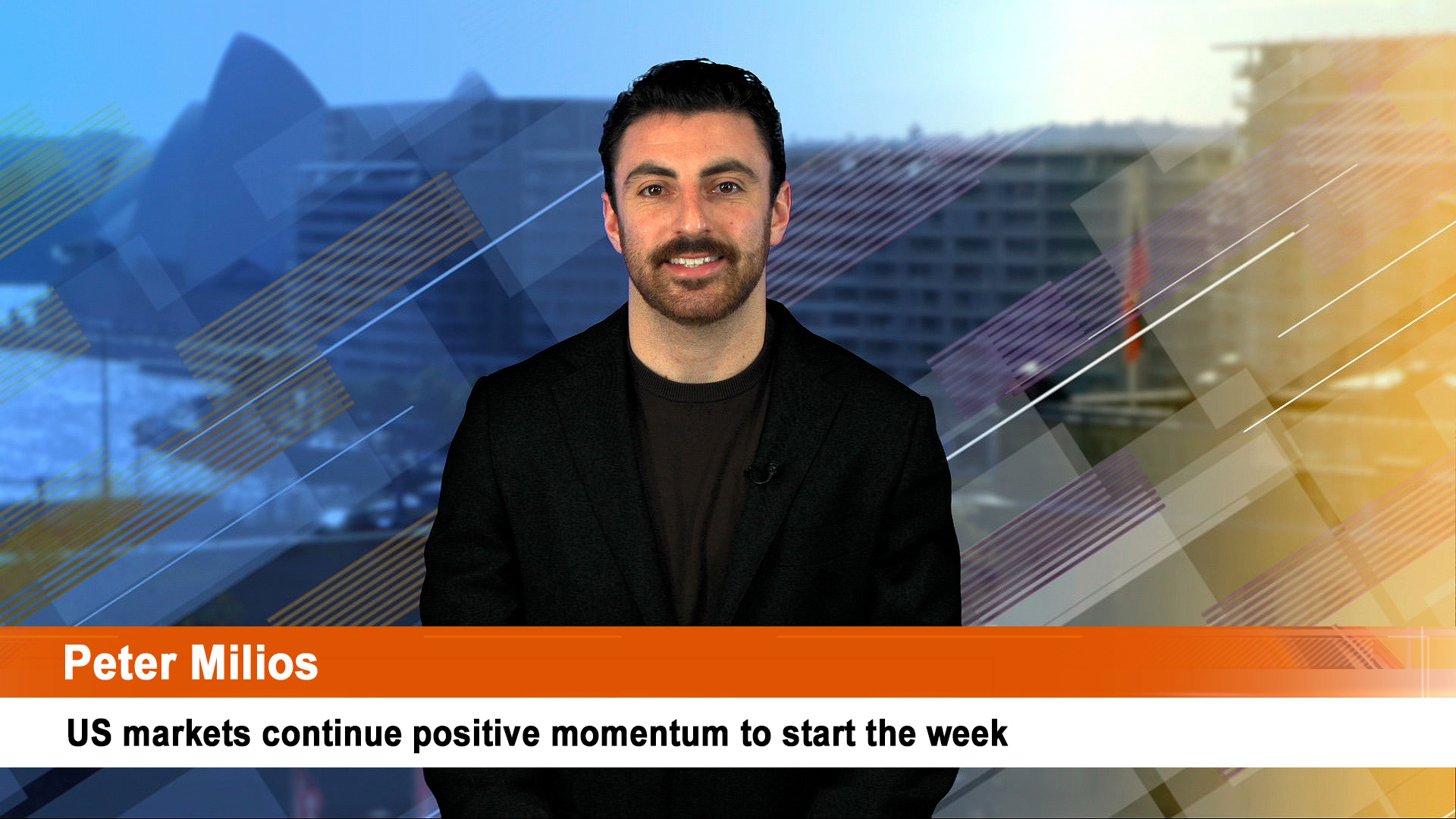Not quite there, but close for the ASX 200 while the All Ords managed to rescale that distant 2007 peak.
It’s the pre-GFC all-time high for the ASX’s major markers – the All Ords and the ASX 200.
The All Ords index closed above its November 1, 2007, closing high of 6,853.6 and the ASX 200 is not far behind.
The All Ords rose 49.9 points, or 0.7%, to 6862.4 yesterday, while the ASX 200 Index ended the session 52.1 points, or 0.8% higher at 6776.7.
However, the All Ords has not yet regained its intra-day record of 6,873.2 points — the highest level it ever touched (briefly) on November 1
The ASX 200 is still about 50 points below its record closing high, also reached on November 1, 2007, of 6828.7.
The major banks led the marked gains on Wednesday. Westpac shares rose 1.7% to $28.39, ANZ climbed 0.8% to $27.65, the Commonwealth Bank shares rose 1% to $82.35 and NAB ended with 1.7 percent higher at $28.33.
Since those distant distant 2007 peaks, the four big banks have been responsible for much of the gains. For example, CBA shares are up more than 430%, Westpac over 244%, the NAB more than 247% and ANZ over 305%.
Other financials have done well (or near financials). Macquarie Group shares are up 1,160%, Goodman Group securities are up over 2,700% and Transurban securities have risen over 560%. But Suncorp shares only managed a rise of just over 35%.
Media stocks have been terrible – Seven West Media shares are down 77% and of course, Ten shares have no value after the collapse in 2017. Up to then though they fell 96% from their 2007 levels. Telstra shares only managed a gain of 141%.
The big miners have helped with BHP shares up 142%, Fortescue up more than 420% (thanks to the recent iron ore boom), but Rio shares have lagged – down 29% in the near 12 years, principally because of the silly $US44 billion takeover of Alcan at the height of the boom and the company’s near-collapse in the wake of that deal which saw it bailed out by Chinese investors for a while.
CSL has been one of the stars – the shares jumping more than 660%, Wesfarmers shares are up over 430% with much of that coming this year in the wake of the spin-off of Coles late in 2018. Woolies shares were up by ‘just’ 106% since late 2007.
Dr. Shane Oliver, the AMP’s Chief Economist reckons the current rebound in the ASX is because “the Australian share market is looking through short term uncertainties around the economy and focussing on lower interest rates and bond yields making shares relatively cheap along with the likelihood that monetary and fiscal stimulus will ultimately boost economic growth.”
Helping that is the continuing high iron ore prices boosting mining companies and a positive lead from global sharemarkets such as Wall Street. Distractions like Brexit are now being ignored.
“Why has it taken so long for the Australian share market to make a new high?“ Dr. OIiver asked.
He says that while US shares made it back to their 2007 high in 2013 and global shares did so in 2014, “Australian shares took longer because of much tighter monetary policy after the GFC, the high $A until recent years, the collapse in commodity prices a few years ago and the fact that the 2007 high was a much higher high for Australian shares than it was for global shares thanks to the resources boom last decade.”
“The nearly 12 years taken to surpass the 2007 high for the Australian share market is a bit like the 13 years it took for the US S&P 500 to really surpass its tech boom high of 2000.
“Of course, once dividends are allowed for, as they should be given the higher dividend yields paid by Australian companies, the Australian share market surpassed its 2007 record high way back in 2013- see graph below.














